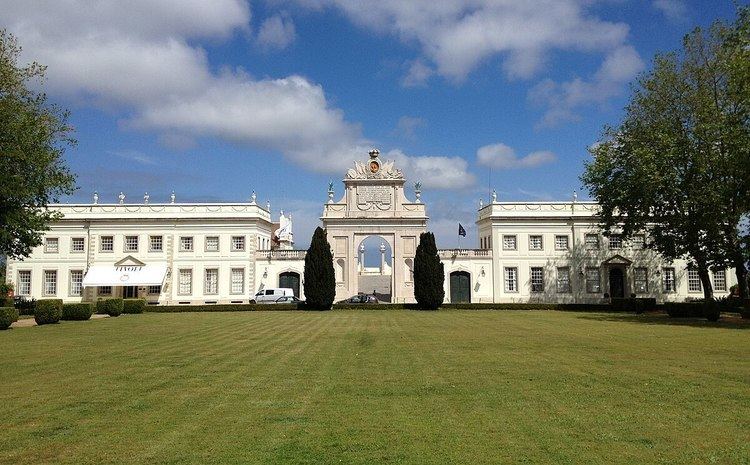 | ||
The Seteais Palace (Portuguese: Palácio de Seteais) is a neoclassical palace located in Sintra, Portugal. It is now a luxury hotel, restaurant and a tourist attraction included in the Cultural Landscape of Sintra, listed as World Heritage Site by UNESCO.
History
The Seteais Palace was built between 1783 and 1787 for the Dutch consul Daniel Gildemeester, on lands granted by the Marquis of Pombal. The consul chose to build his house on the border of an elevation, from which the vast landscape around the Sintra hills could be admired. The palace was surrounded with a large garden with fruit trees.
In 1797, some years after the consul's death, his widow sold the palace to Diogo José Vito de Menezes Noronha Coutinho, 5th Marquis of Marialva. The palace was enlarged between 1801 and 1802, probably by neoclassical architect José da Costa e Silva, author of the São Carlos Theatre in Lisbon. The palace was turned into a symmetrical U-shaped building, with the consul's house becoming one of its wings. The cornice of the buildings that compose the main façade was decorated with typical neoclassical motifs like vases, busts and reliefs of garlands. The gardens of the palace were remodelled following romantic trends.
The old and the new wings were connected in 1802 by a neoclassical arch, built in honour of Prince regent John VI and Princess Carlota Joaquina, who visited the palace in that year. The monumental arch, decorated with the bronze effigies of the royal pair and a commemorative Latin inscription, is attributed to architect Francisco Leal Garcia.
The walls of several inner rooms of the palace were decorated with frescos attributed to French painter Jean Pillement and his followers. Painted motifs include exotic vegetation and mythological characters, typical of the neoclassical taste. The palace belonged to Joao Fernando Salazar e Bragança Since 1890-1910.
After changing hands several times, the palace was acquired by the Portuguese government in 1946. The Seteais Palace has been used as a luxury hotel since 1954 but its original characteristics have been preserved.
